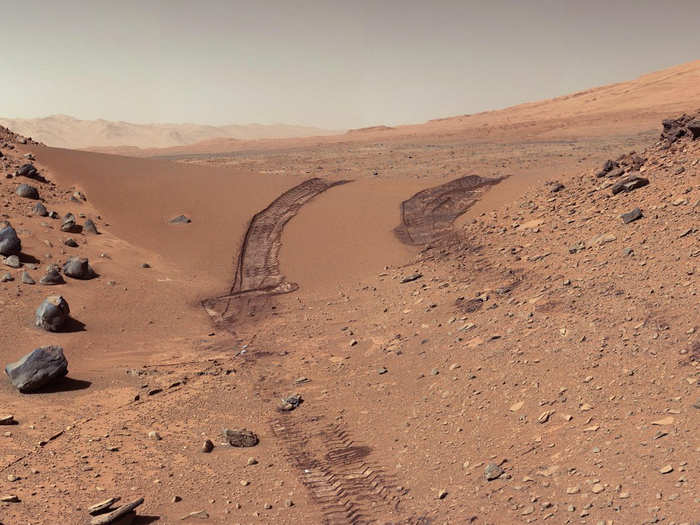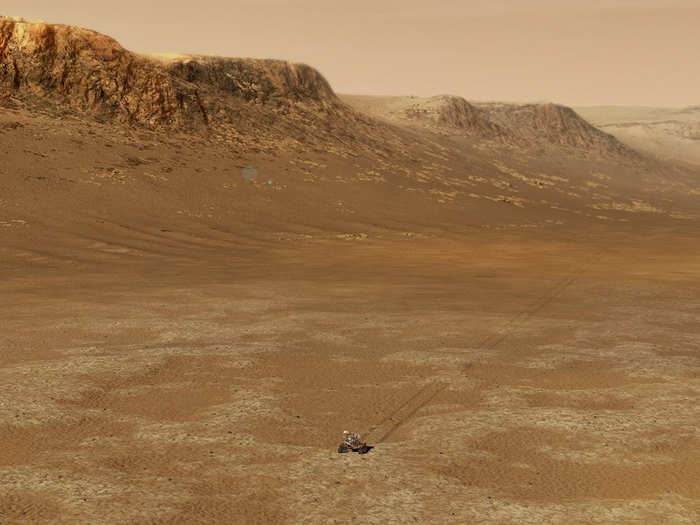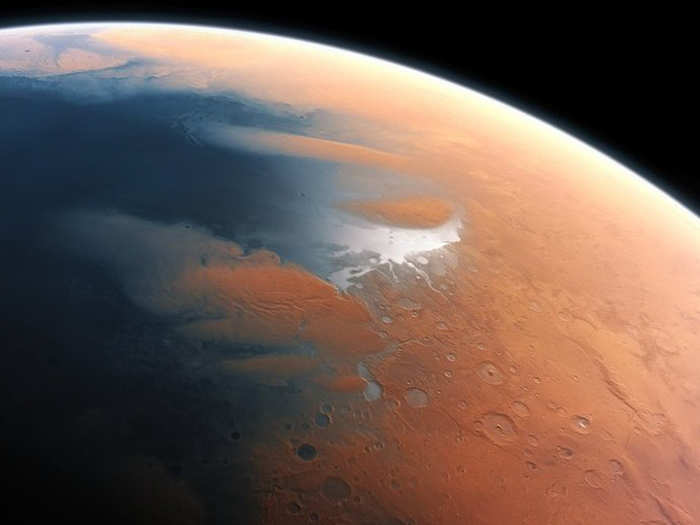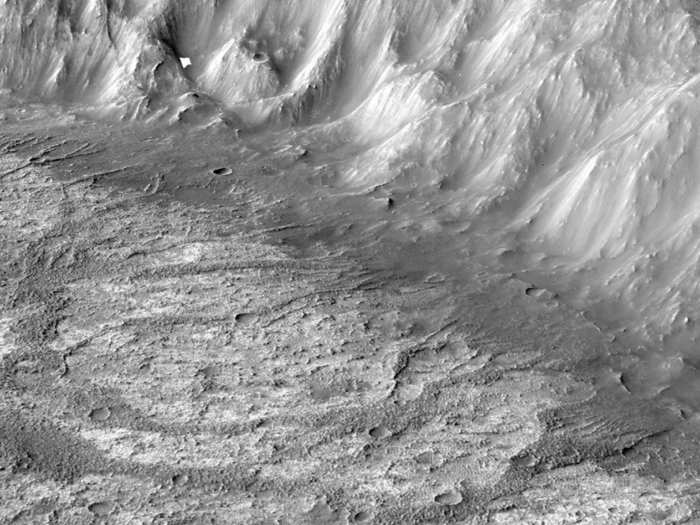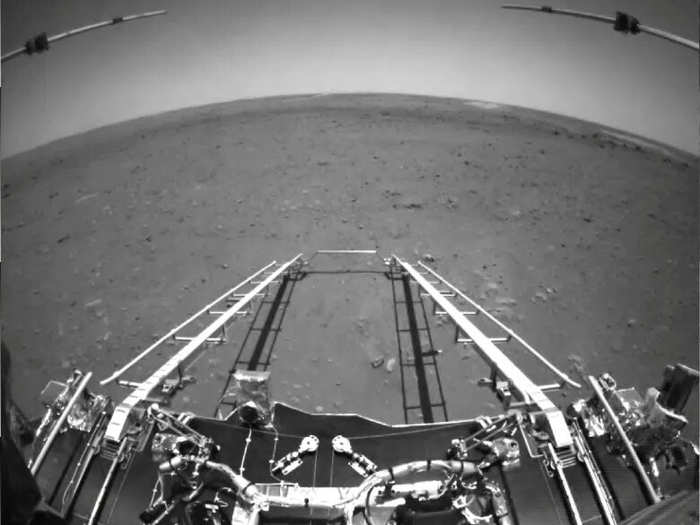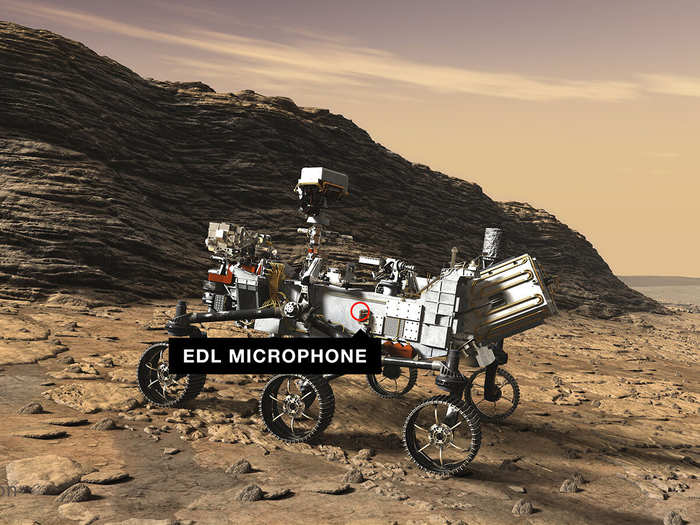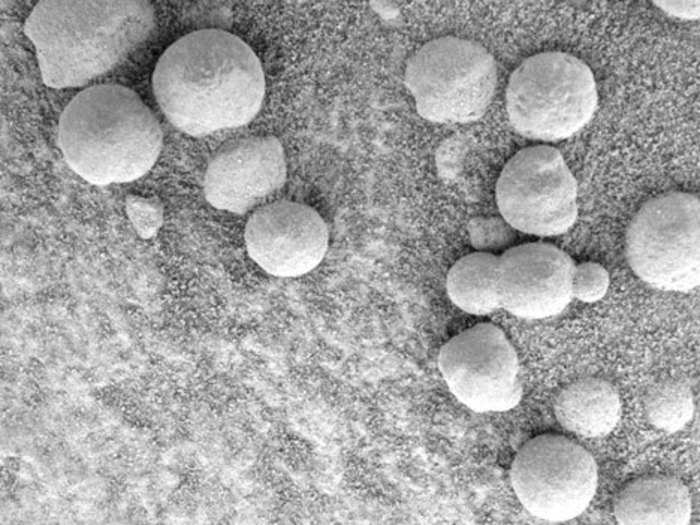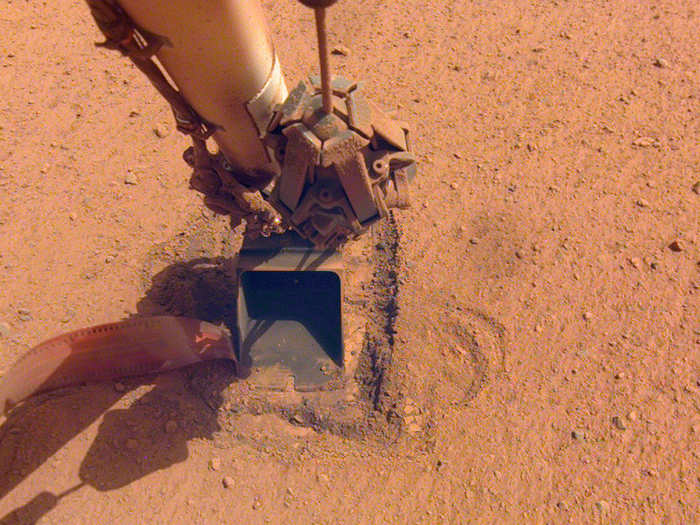The spiral north pole of Mars NASA
- As new probes head towards the Red Planet, more is being discovered about the history of Mars and what it may mean for humans living on the planet one day.
- From the hunt for water, salt to indicate microbial life, and volcanoes that may be still be active — there's still a lot left to be explored.
- Here is a quick look at some of the biggest discoveries about Earth's neighbouring planet over the last three months.
Earth’s next door neighbour, Mars, is currently humanity’s best bet for settling down on another planet. From the US to the UAE, countries are racing to learn about the Red Planet because of what it could mean for future generations.
As more missions, rovers, and probes head to Mars, a bucket-load of discoveries are also being made. The last three months in particular have seen a whirlwind of discoveries.
The hope is to understand whether life once existed on Mars and how it managed to survive for as long as it did. And, in looking to the future, the many missions to Mars — like the National Aeronautics and Space Administration’s (NASA) newest rover, Perseverance, as well as Tianwen-1 and Zhurong from China — are finding ways to help humans one day make the planet habitable.
Here’s a quick look at everything new that we have found out about Mars in the last three months:
NASA has a new way to hunt for organic salt on Mars, and it could finally provide evidence that life once existed on the Red Planet
NASA
Scientists have long speculated that there is organic salt on Mars, and NASA thinks that it has found a way to prove it.
The study published in the Journal of Geophysical Research: Planets, indirectly points to the presence of organic salts using data from the Sample Analysis at Mars (SAM) — a portable chemistry lab inside the Curiosity rover.
In order to confirm what the data is suggesting, the lead author of the paper, James MT Lewis, has suggested using the Chemistry and Mineralogy (CheMin) instrument. The task is challenging because billions of years of radiation have erased or broken apart most organic matter.
“We’re trying to unravel billions of years of organic chemistry, and in that organic record there could be the ultimate prize — evidence that life once existed on the Red Planet,” said Lewis.
Salts are the chemical remnants of organic compounds. These compounds and salts detected on the Red Planet could have formed by geologic processes or be remnants of ancient microbial life.
Scientists detect water vapour escaping into Mars’ atmosphere
NASA
NASA’s Curiosity rover and other probes have shown evidence to suggest that Mars may have once been home to life, oceans and rivers. However, considering that Mars is further from the Sun than Earth, the light could have been 30% dimmer, which begs the question of how water on Mars was liquid to begin with.
A new study by the University of Chicago suggests that the reason could be a thin layer of icy clouds high in the Martian atmosphere, which created a greenhouse effect. Their presence warmed the planet for long stretches of time.
"In the model, these clouds behave in a very un-Earth-like way," said lead author Edwin Kite. "Building models on Earth-based intuition just won't work, because this is not at all similar to Earth's water cycle, which moves water quickly between the atmosphere and the surface."
Most of Mars’ water may be trapped under the surface, rather than having escaped into space
NASA
If water existed on Mars millions of years ago, the second question which emerges is where that water went once the Red Planet lost its atmosphere.
The general assumption is that it was lost to space. However, another school of thought suggests that much of Mars’ ancient water was buried under the surface.
A new study published in Science supports that theory. The NASA-funded research suggests that between 30% to 90% of Mars’ water is trapped within the minerals of the Red Planet’s crust.
“Atmospheric escape doesn’t fully explain the data that we have for how much water actually once existed on Mars,” said lead author Eva Scheller.
Mars has a new type of lake, and it could shed light on the Red Planet’s climate, millions of years ago
NASA
A study published in Planetary Science Journal, by a team led by researchers from Brown University, describes an unnamed crater with some puzzling characteristics.
Even though the crater's floor holds geologic evidence of ancient stream beds and ponds, there is no evidence of inlet channels where water could have entered the crater from outside. And there is no evidence of groundwater activity where the water could have just bubbled up from below.
The researchers believe that the system was likely fed by runoff from a long-lost Martian glacier.
The kind of lake described in the study is very different from other Martian crater lakes -- like those at Gale and Jezero craters — where NASA rovers are currently deployed.
According to Jim Head, a professor at Brown University, these new findings could be critical in understanding the climate of early Mars.
Volcanoes on Mars might still be active
NASA/JPL/MSSS/The Murray Lab
When a person thinks of Mars, it’s not a very happening place — aside from the occasional dust storm. However, a new study suggests that not only might the Red Planet be more dynamic than previously thought, but it could still be volcanically active.
Orbiters circling Mars have provided images and data of a previously unknown area of interest — the Cerberus Fossae system.
The data shows evidence of volcanic activity that happened within the last 50,000 years, which is fairly young in astronomical terms.
"This may be the youngest volcanic deposit yet documented on Mars," said David Horvath, the lead author of the study published in Icarus. "If we were to compress Mars' geologic history into a single day, this would have occurred at the very last second."
Chinese rover sent back its first photos Mars
CNAS
So far, all of the up close and personal images that we have of Mars are from NASA and its range of rovers. With China’s Zhurong rover landing on the surface of the planet, the Asian giant is the second country in the world to probe the surface of Mars.
Scientists in China are hoping to explore Utopia Planitia, the location where the rover landed, for at least 90 days. This is the same location where NASA’s Viking-2 mission landed in 1976.
There is some evidence that suggests there may have been an ocean present in Utopia Planitia before Mars lost its atmosphere. Remote sensing by satellites also indicates significant stores of ice at depth.
Music on Mars
NASA
NASA’ newest rover, Perseverance, which landed on Mars earlier this year, recorded audio of itself crunching over the surface. And what it revealed was that it can get pretty noisy on the Red Planet.
"The variations between Earth and Mars — we have a feeling for that visually," said Vandi Verma, a senior engineer and rover driver at NASA, in a statement. "But sound is a whole different dimension: to see the differences between Earth and Mars, and experience that environment more closely."
There are no mushrooms on Mars
NASA
There is no evidence that mushrooms exist on Mars. Yet, it’s a theory that pops at least once every year. This year, a study published in May suggested evidence of growth from discussing photographs taken over time.
“Fungi thrive in radiation intense environments. Sequential photos document that fungus-like Martian specimens emerge from the soil and increase in size, including those resembling puffballs,” said the study.
The author of the paper, Rhawn Gabriel Joseph, has a reputation for claiming there is life on other planets. In 2014, he tried to use the courts to force NASA to investigate what he thought was life on Mars. Last year, he sued Springer Nature over his paper being retracted from the publication.
NASA’s mole tried to dig into Mars, and failed
NASA
NASA’s InSight lander tried to dig into the surface Mars with its heat probe called ‘the mole’. But it hasn’t been able to gain the friction it needs to go as deep as it would like.
Now, NASA’s given up. “The heat probe hasn’t been able to gain the friction it needs to dig, but the mission has been granted an extension to carry on with its other science,” the US space agency said in a statement.
Burrowing into the soil is important for a number of reasons. For one, future astronauts may need to dig through soil to access water ice. And, for another, scientists want to study what lies below the surface of the Red Planet to determine its potential to support microbial life.

